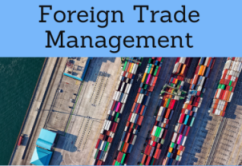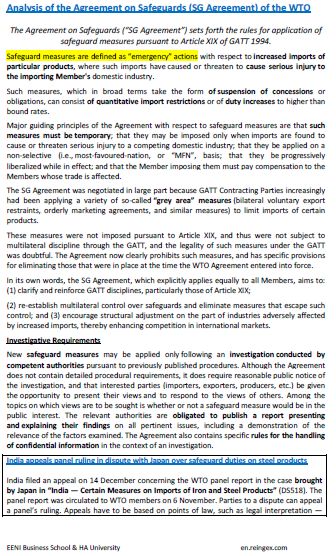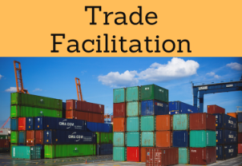
Agreement on Safeguards (WTO SG) Trade
Analysis of the WTO Agreement on Safeguards. The Sunset clause
- Introduction to the WTO Agreement on Safeguards (SG Agreement)
- Safeguards measures in international trade
- Prohibition of grey area measures. The Sunset clause
- Safeguard investigation
- Analysis of the Agreement on Safeguards (SG Agreement)
The objectives of the subject “WTO Agreement on Safeguards (SG)” are the following:
- To understand the pillars of the WTO Agreement on Safeguards (SG)
- To know the process of application of a safeguard measure by a government
- An in-depth analysis of the Agreement on Safeguards (SG)

The Subject “Agreement on Safeguards (SG)” belongs to the following Online Programs taught by EENI Global Business School:
Courses: Non-tariff Measures, Foreign Trade Management.


Masters: International Business, Foreign Trade, International Transport.

Learning materials in 
 Acuerdo sobre Salvaguardias (SG)
Acuerdo sobre Salvaguardias (SG)  Accord sur les sauvegardes
Accord sur les sauvegardes  Acordo sobre Salvaguardas (SG).
Acordo sobre Salvaguardas (SG).
Trade Facilitation - Trade Facilitation Agreement - Kyoto Convention - Convention Harmonization of Frontier Controls of Goods.

Any member of the WTO that needs to protect the domestic industry can temporarily restrict the imports of a product that could cause a considerable harm to the local manufacturers.
Sample - Agreement on Safeguards (SG):

When a government applies this type of non-tariff measures, it is applying a safeguard measure.
The WTO regulates this type of measures through the Agreement on Safeguards (SG Agreement).
The Agreement on Safeguards (SG) also prohibits the grey area measures (bilateral agreements between governments) and establishes the Sunset clause.
The Agreement on Safeguards (SG Agreement) is composed of fourteen articles and covers topics such as: application of safeguard measures, investigation, examination, duration of the measure, concession, surveillance or dispute settlement.
A company, or a certain sector, can ask its government for the temporary application of a safeguard measure.
It is important to note that the application of a safeguard measure can never go against the imports of a country .
The application of a safeguard measure implies that the government that implements it must offer something in return.

Non-tariff measures:
- Technical Barriers to Trade. Agreement on Technical Barriers to Trade
- Pre-shipment Inspection. Agreement on Preshipment Inspection
- Sanitary and Phytosanitary Measures. Agreement on Sanitary and Phytosanitary Measures
- GATS
- Agreement on Sanitary Measures
- Non-automatic Import licensing, quotas and prohibitions

(c) EENI Global Business School (1995-2024)
We do not use cookies
Top of this page


